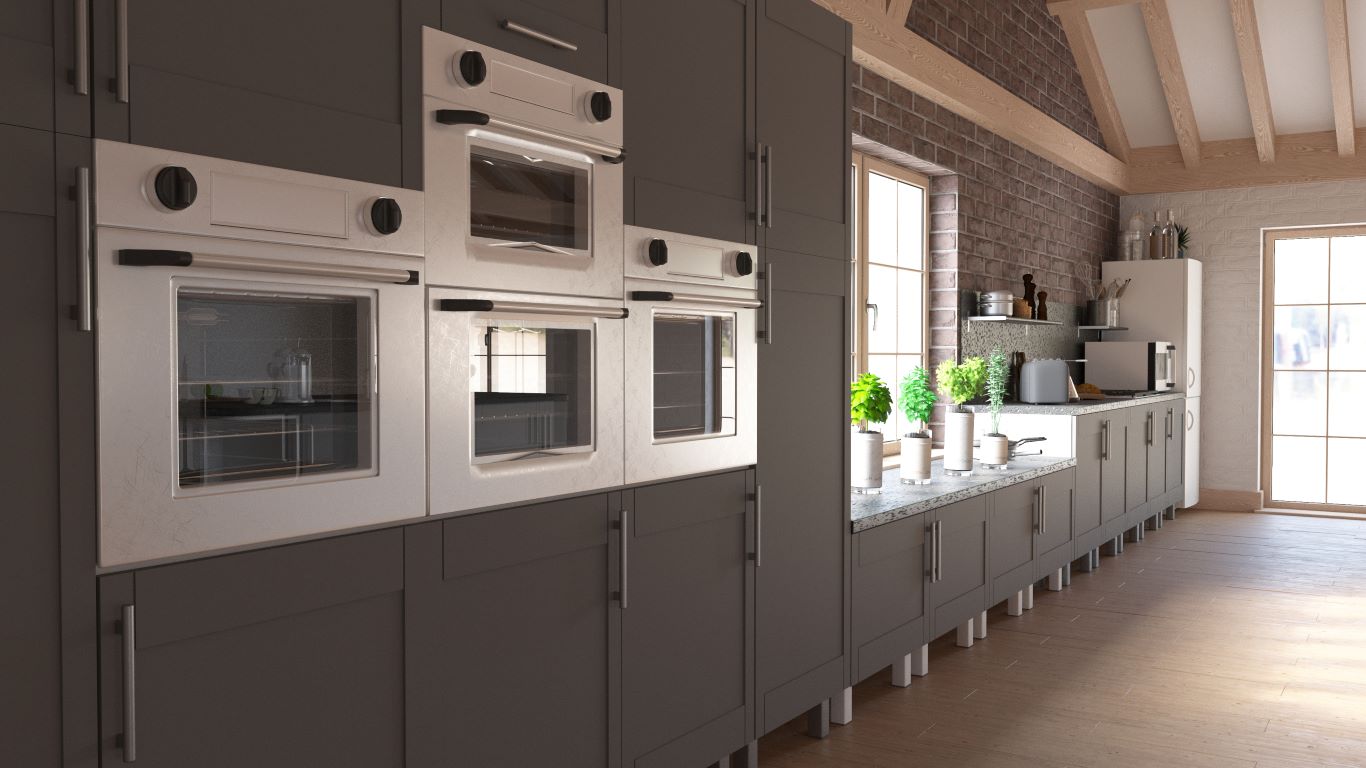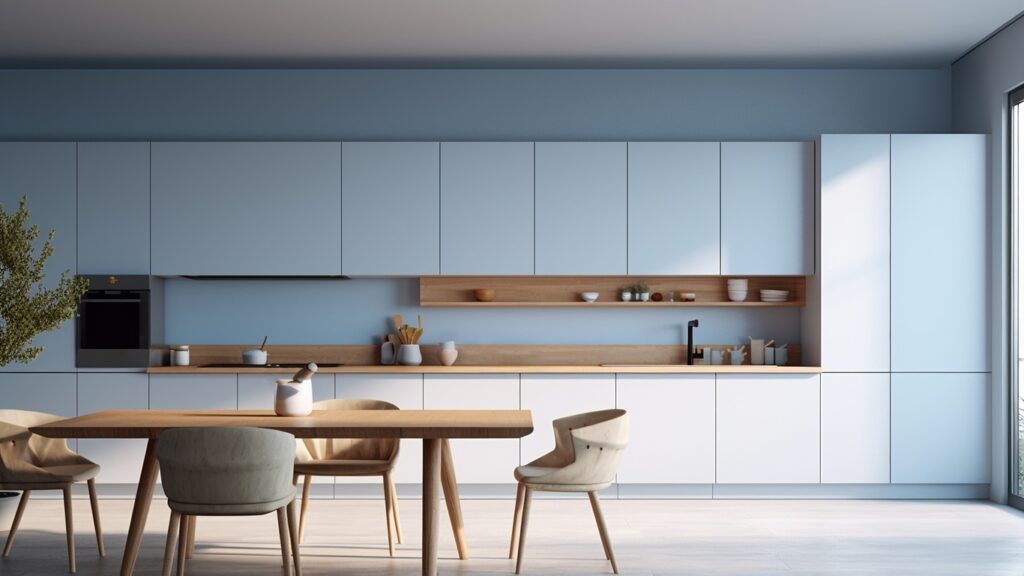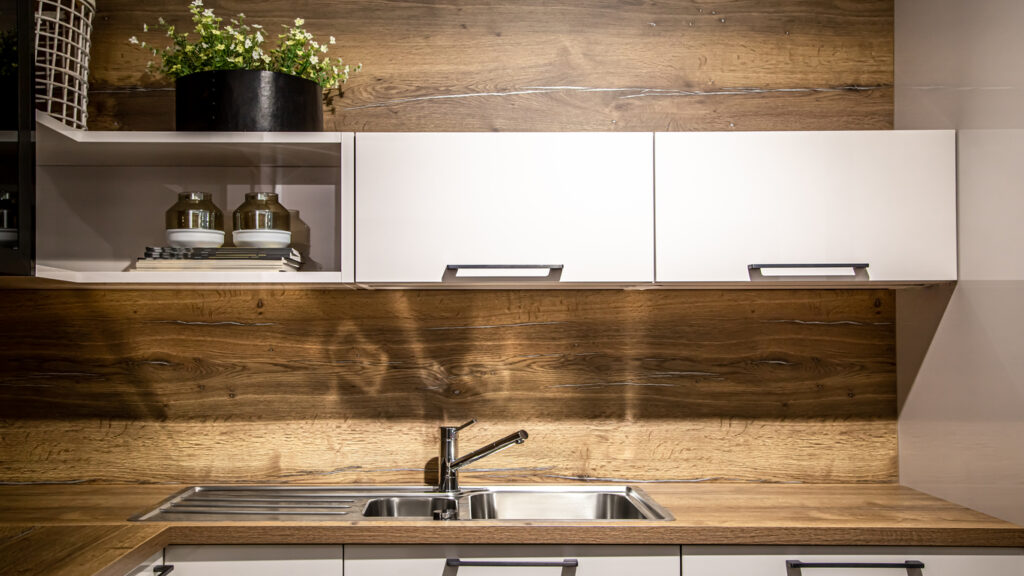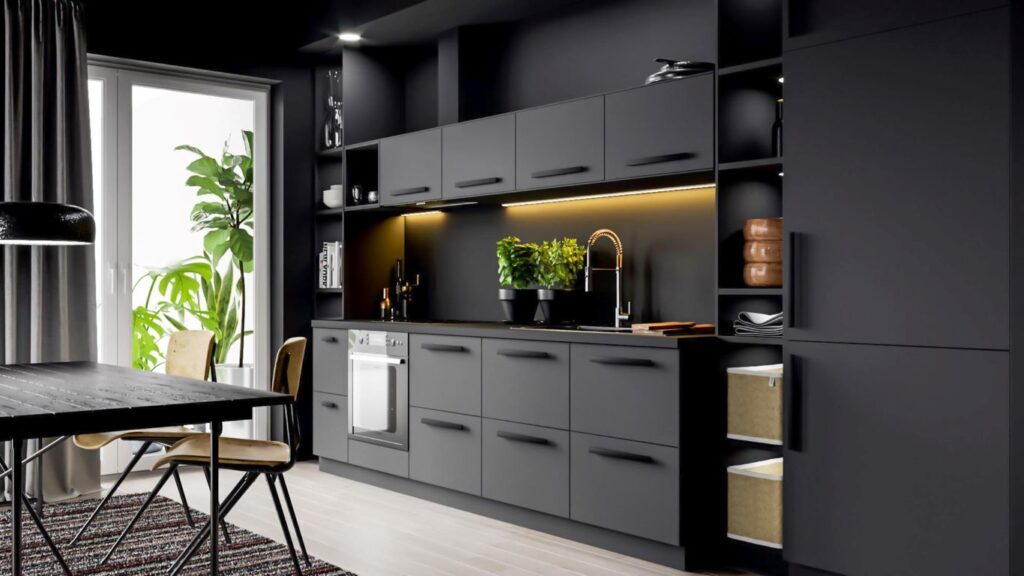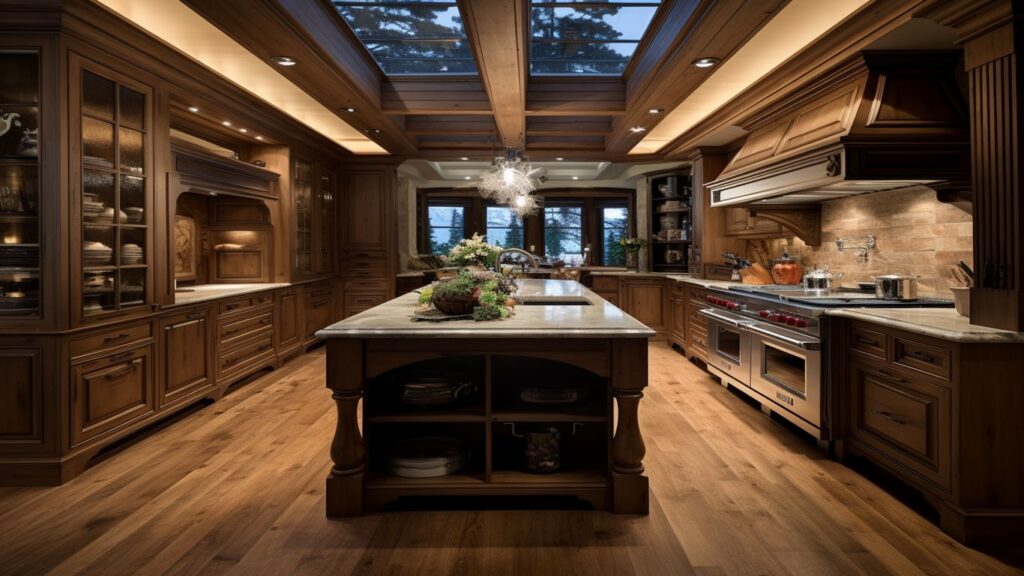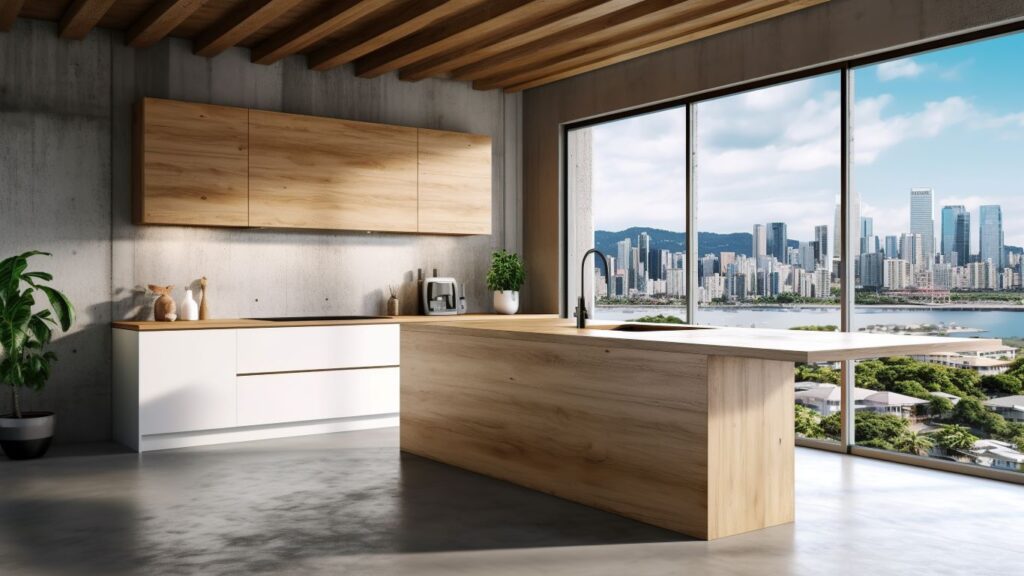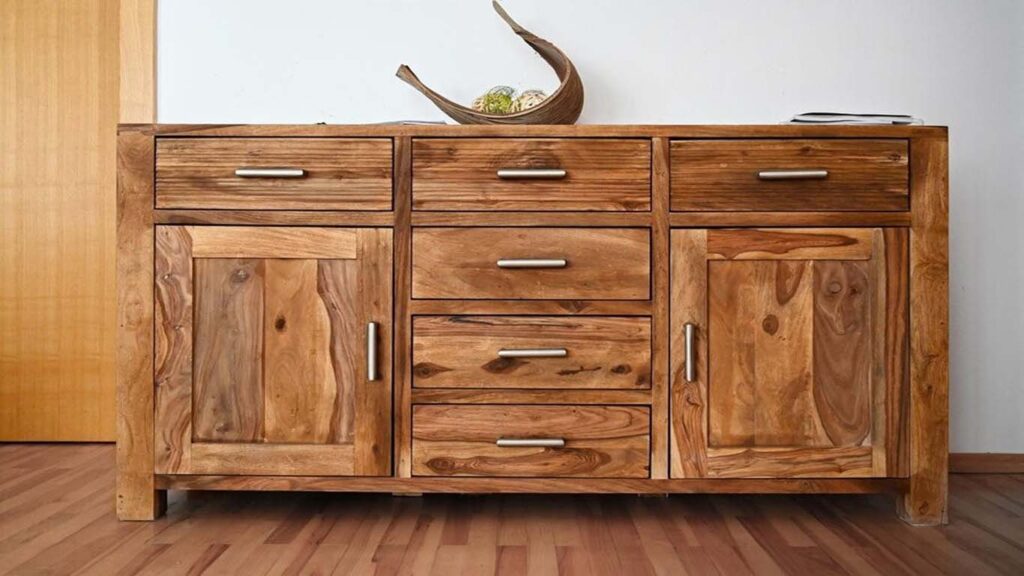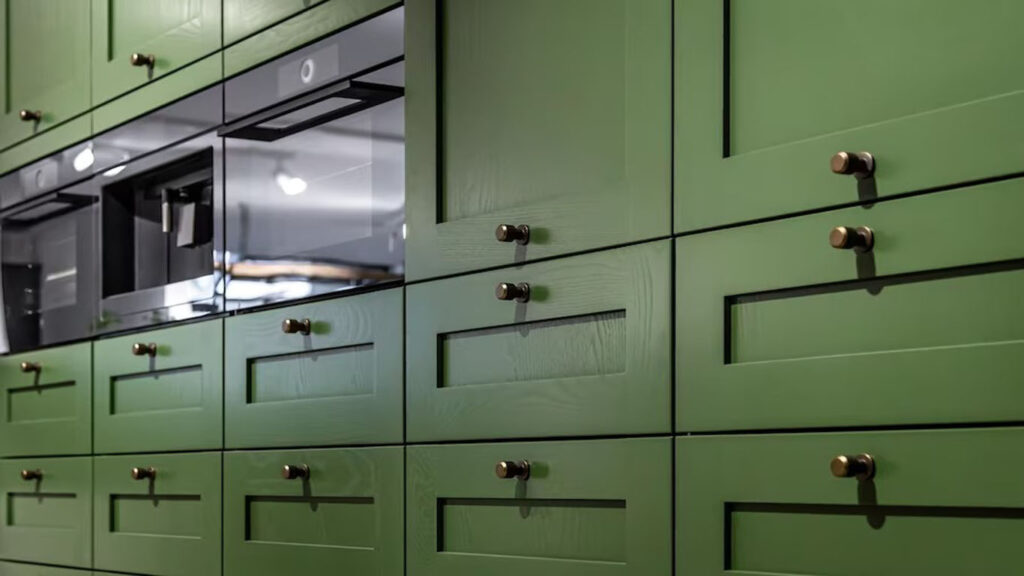Are you attempting to decide on the style of your new kitchen cabinets? With so much attention paid to the appearance of your cabinets, choosing the proper door style is an essential step in the kitchen design process.
So, how do you know which types of cabinet doors style are best for you?
As a result, it has amassed an incredible selection of various cabinet door styles to ensure that an option suits every customer’s design preferences. This post will review seven prominent cabinet door styles and materials to help you decide which is best for your kitchen.
7 Types of Cabinet Doors
1. Shaker Cabinet Doors
Shaker-style cabinet doors are made of a 5-piece solid frame with a recessed center panel.
Shaker doors are the prototypical transitional door style.
The stiles and rails can be thinner for a more modern door or broader for a classic cabinet. Shaker doors can be combined with ornate trim and crown molding. You can accessorize them with bold ornamentation or a sleek, modern trim combination.
Shaker doors are unlimited in design possibilities and are possibly the most global door form.
The shaker doors are typically constructed with a wood veneer center panel rather than solid wood, which can cut the cost of each cabinet door by up to $50!
While this is the most common construction type, shaker doors with a solid central panel are also available. However, you only use a solid center panel instead of a veneer if you’re staining the cabinets because stain adheres differently to wood veneer and solid wood.
Shaker doors can also differ quite a deal in intricate ways. For example, the “Brookfield” and the “Crestfield” are two of the most popular shaker door styles.
2. Raised Panel Cabinet Doors
Raised panel cabinet doors have an elevated center panel that adds depth and character to the overall look.
Unlike shaker doors, which are limited to a 5-piece design, raised panel doors can be constructed in various ways.
They can be constructed with a 1-piece door using router bits to create the detailing, or they can be made with a 5-piece door and a veneer or solid wood central panel. Furthermore, raised panel doors might have mitered or regular edgework.
Raised panel doors are typically associated with a historic design style. They have a ‘heavier’ appearance, especially with a solid central panel, and are frequently complemented by more ornamental trim and moldings.
They always use a 1-piece door for MDF cabinets to ensure that the paint never cracks owing to “breathing” – the natural phenomenon of wood expanding and contracting due to temperature or humidity fluctuations.
Changing from a 5-piece door to a 1-piece door eliminates the possibility of movement or joint separation and ensures a flawless painted surface.
3. Cathedral and Arched Doors
Cathedral and arched cabinet doors have an arch or cathedral-styled arch at the top of the center panel. These types provide the most traditional-looking cabinet doors – picture 1990s wood kitchens.
While Lakefield doors have a flat center panel, many cathedral or arched cabinets feature a raised center panel emphasizing classic design elements.
4. Slab Cabinet Doors
Slab (flat panel) doors are balanced and frameless. They are the classic door style for modern kitchen designs.
While you can dress them up with sleek and thin cabinet handles, it’s pretty usual to go with no hardware by incorporating recessed bottoms or tip-on and touch latches.
Because solid wood doors are heavier and more expensive to build, the slab door types are always in a wood veneer (never solid wood). Slab doors are also available in textured melamine, PET, Thermofoil, and acrylic materials.
One advantage of slab doors is that the flat panel with no stiles or rails lets the wood grain be prominently seen. The rather basic appearance of slab doors can be entirely restricting. Because they aren’t decorative, you’ll be limited in the molding and crown you can mix with your cabinetry.
5. Beadboard Cabinet Doors
Beadboard (or “Beaded”) cabinet door types are a terrific way to create a cottage or rustic ambiance in your kitchen.
Beading refers to the thin lines or grooves carved into the middle panel of wood. They work well in a farmhouse or country-style kitchen with wood ceiling beams or a rustic, weathered look.
Beading is also a lovely way to add some ornamental flair to the rear panel of a kitchen island or peninsula.
6. Mullion Cabinet Doors
Mullion cabinet doors feature a glass insert with moldings that divide an open frame. The term “mullion” refers to the frames that run vertically or horizontally on a window or glass door.
These cabinet doors are frequently used on upper cabinets to highlight elegant china or wine glasses. As a result, they’re pretty frequent in bar areas or china cabinets.
Mullion door glass inserts can be transparent for a seamless display or textured and tinted glass, so you don’t have to worry about a flawlessly attractive interior cabinet continually.
7. Open Frame Cabinet Doors
Open-frame cabinets have a door frame with a wide glass insert in the center. They are mullion doors without internal moldings.
These kinds of cabinets, like mullion doors, are excellent for displaying aesthetically beautiful goods within your cabinets.
Open-frame cabinets are also a terrific accent component in a larger cabinetry design.
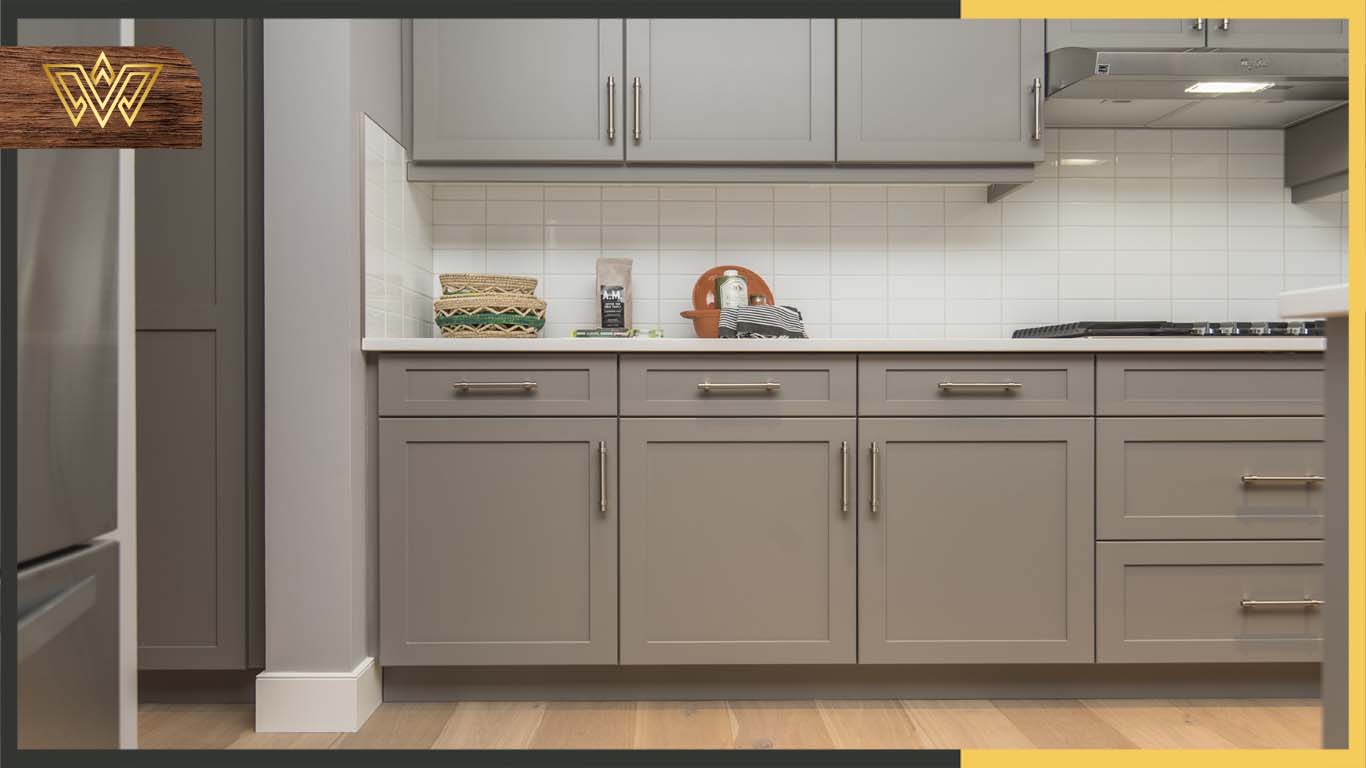
Types Of Cabinet Doors Materials
1. Solid Wood
Because of its natural strength and longevity, solid wood is the highest-quality kitchen cabinet material available. While painted solid wood cabinets are available, the natural color, grain, pattern, and texture are the key aesthetic appeals of these cabinets.
Wood cabinets have problems despite their outstanding beauty and longevity. For one thing, these cabinets are more difficult to maintain than some of the manufactured materials accessible. They are susceptible to water damage and may fade or darken with sun exposure over time. Unique cleaning methods, adequate sealing, and regular polishing are required to keep them in good condition.
It should come as no surprise that solid wood cabinets are the most expensive type of cabinet available. Solid wood cabinets for a normal 10’x10′ kitchen might cost $5,000 to $25,000 or more, depending on the quality and style of wood used.
2. Plywood
Plywood is a cabinet material made from thin wood layers pressed together and coated with a veneer. Because it is more appealing and durable than particle board, this material is commonly seen in higher-end stock or semi-stock cabinets.
Plywood cabinets are the way to go if you want cabinets that will last without breaking the bank. Plywood offers the most robust strength-to-weight ratio of any kitchen cabinet material featured here due to its unique structure. Because plywood is durable and strong while lightweight, it is easy to install and less prone to collapse.
3. Medium-Density Fiberboard (MDF)
Do you have a limited renovation budget? MDF cabinets are cheaper than solid wood cabinets such as cherry or maple. MDF is among the most affordable engineered wood cabinet materials, costing between $100 and 280 per linear square foot.
MDF may be better than wood if you intend to paint your cabinets. MDF is engineered wood manufactured from soft and hardwood residuals (such as sawdust) that are kept together with glue or resin. Consequently, a hefty wood-like panel with a flawlessly smooth surface for painting is created.
Like all engineered cabinet materials, MDF is not as long-lasting as solid wood. It is prone to scratches and dents, and you are unlikely to be able to correct the problems unless you replace the cabinet doors. MDF cabinets, on the other hand, withstand heat and humidity better when properly sealed and are termite-resistant.
4. High-Density Fiberboard (HDF)
Consider high-density fiberboard if you want an economical and long-lasting kitchen cabinet material. HDF is an engineered wood composed of wood fiber, genuine wood, resin, and adhesives created under extreme pressure and heat. In terms of hardness and endurance, it is superior to MDF and more comparable to genuine wood.
HDF cabinets combine the most excellent qualities of natural wood and MDF with a smooth, paint-ready finish that is resistant to warping and breaking. Because of the intensive production process, HDF cabinets are more expensive than MDF cabinets but still less expensive than solid wood cabinets.
5. Particle Board
Particle board is the most affordable cabinet material. It is created by compressing resin, wood chips, and sawdust into rigid sheets or panels, then coated with a laminate or vinyl veneer. Particle board is lighter than MDF and can be readily drilled, chopped, milled, or bonded – but that’s where the similarities end.
If you choose particle board cabinets to save money, remember that this material is not particularly robust and should be treated cautiously. Particle board cabinets are more susceptible to moisture damage and can expand, warp, and discolor when compared to plywood or MDF cabinets. Particle board is softer and more fragile than other engineered wood varieties, so if you’re prone to banging, slamming, or bumping your cabinets, you should avoid it.
Types Of Cabinet Doors With WoodyArt
We feel a cabinet door type in our range suits any design taste. Woodyart has everything you need if you’re looking for custom cabinetry. With over ten years of experience, we provide our clients with a fully customized design approach with our experienced designers.
Frequently Asked Questions (FAQs)
Which Types Of Cabinet Doors In The Kitchen Are The Best?
Almost any sort of cabinet door will look good in your kitchen. Because a kitchen is busy, choose a door made of durable wood, such as maple, and consider an easy-to-clean form, such as a square pane style. However, the ideal form of kitchen door is one in the manner and appearance you love.
What Are The Most Common Types Of Cabinet Doors?
Cabinet doors are classified into two types: framed and frameless. Every door style falls into one of these two categories. A frameless cabinet has a door and drawer face nearly the same size as the cabinet box. A framed cabinet, on the other hand, is the polar opposite. It has a drawer and door face that is more minor than the cabinet box, giving it a frame-like look. Explore our framed and frameless cabinet door choices now.

